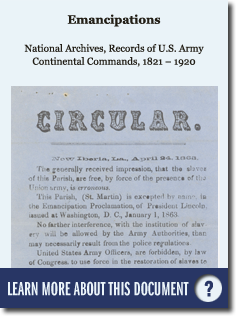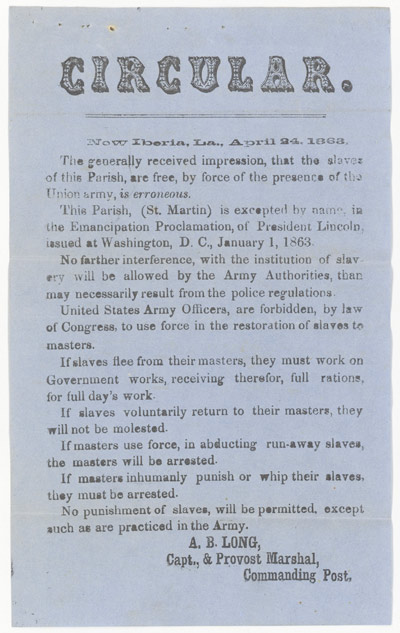In March 1861, Congress proposed a 13th amendment to the U.S. Constitution. It would have stopped the Federal Government from interfering with slavery, but it was never ratified by the states. Four years later, another U.S. Congress passed a very different 13th Amendment that abolished slavery forever and freed four million people. It was ratified.
What changed between the passage of these two amendments?
How did a war over secession become one for human freedom?
What role did Lincolnís Emancipation Proclamation play?
The documents in this area reveal that the path to emancipation was a gradual and uneven one. It was shaped by military events, government policies, and the actions of enslaved people who pursued and fought for their freedom.



